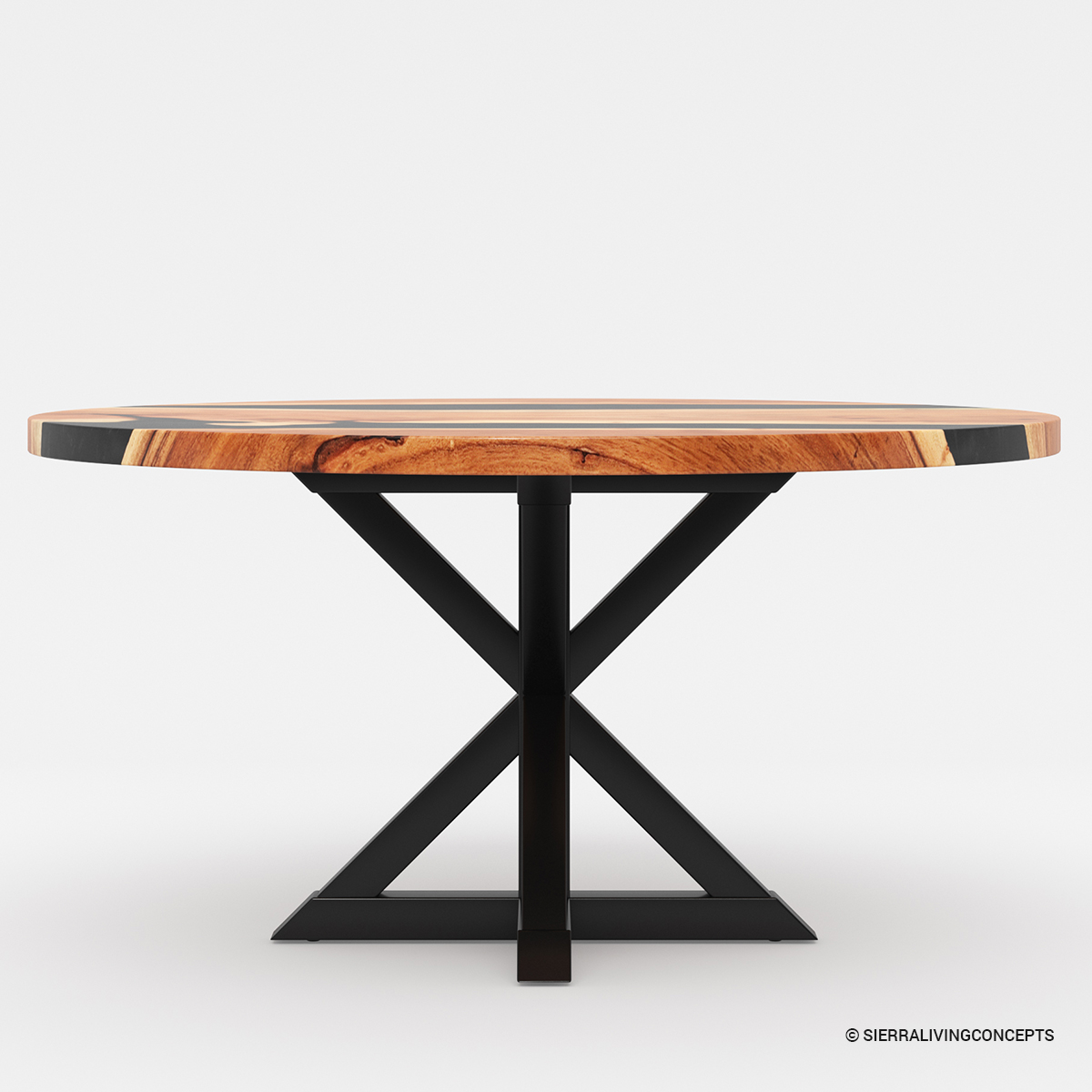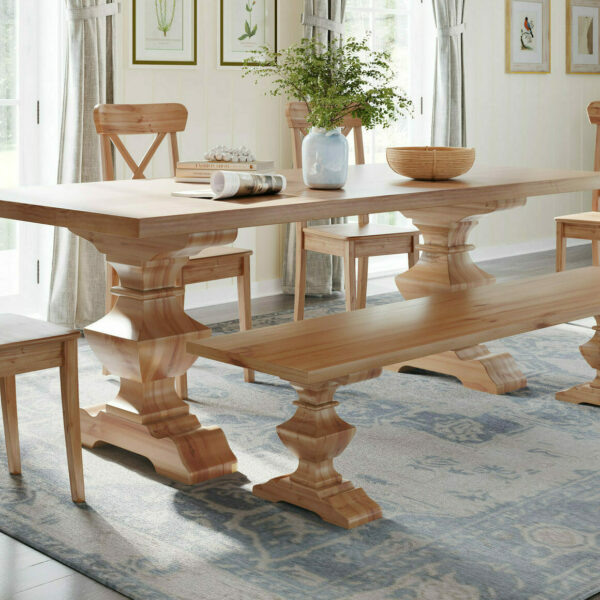How the Right Dining Room Table Legs Can Complete Your Dining Room Look
How the Right Dining Room Table Legs Can Complete Your Dining Room Look
Blog Article
From Traditional to Modern: Find the Ideal Dining Room Table Legs for Your Design
The choice of dining-room table legs plays an essential function in specifying the overall personality of your space, connecting the void in between conventional craftsmanship and modern-day aesthetic appeals. While timeless styles such as cabriole and turned legs evoke a sense of classic class, contemporary designs like barrette and geometric options offer a chance for striking visual passion. Evaluating the best balance in between these designs calls for a nuanced understanding of your existing design and personal taste. As you think about these elements, the concern stays: how can you effortlessly incorporate these diverse leg styles to produce a harmonious dining experience?
Understanding Table Leg Styles
The variety of eating room table leg designs can considerably influence both the looks and capability of the area. Each leg design contributes one-of-a-kind sensible functions and aesthetic components, dealing with varied layout choices and use demands. Recognizing these styles is important for picking the ideal eating table that lines up with your total indoor style vision.
For example, tapered legs offer a clean, timeless look that can improve a room's sophistication, while stand bases offer stability and maximize legroom, making them ideal for smaller sized spaces. Barrette legs, a characteristic of mid-century modern-day design, introduce an industrial flair, allowing for an airy, open feel. Trestle legs evoke rustic charm, providing robust assistance and a sense of eternity.
Moreover, the selection of products plays a substantial duty. Wood legs can bring warmth and appearance, whereas steel alternatives typically share a streamlined, contemporary vibe. Eventually, comprehending table leg styles is essential for developing a cohesive eating location that reflects individual style while ensuring practicality and comfort. By attentively considering these aspects, you can boost both the aesthetic and functional charm of your dining room.
Conventional Table Leg Options
When selecting dining-room table legs, typical options often embody timeless sophistication and craftsmanship. These designs show an abundant heritage and a commitment to high quality, making them excellent for those that appreciate timeless aesthetics.
Among one of the most iconic typical leg styles is the cabriole leg, identified by its graceful curved shape. This design often features decorative makings and is most typically found in Queen Anne and Chippendale furniture. An additional prominent option is the turned leg, which flaunts a series of smooth, rounded shapes that supply a classic appearance while maintaining stability.
In addition, the straight leg, while basic, supplies a unadorned and sturdy framework that can mix perfectly with a variety of tabletop designs. For those attracted to ornate describing, claw-and-ball feet legs stimulate a sense of grandeur and can offer as a spectacular centerpiece in any type of eating room.
Lastly, stand bases, although not strictly legs, supply an alternate traditional option that permits sufficient legroom and can be perfectly sculpted. Each of these traditional leg styles contributes to the total ambiance of a dining-room, weding feature with aesthetic charm.

Modern Table Leg Layouts
Modern table leg layouts provide a varied array of styles that emphasize cutting-edge products and clean lines. These designs frequently focus on performance while acting as striking focal points within a dining area. Minimalist visual appeals prevail, with legs crafted from products such as steel, glass, and engineered wood, which add to a ventilated and contemporary feel.
One popular design is the barrette leg, identified by its slender, conical structure that offers stability without overwhelming the tabletop (dining room table legs). This design is commonly discovered in mid-century modern furniture and can effortlessly match different dining table forms. Another fad is try this out using geometric shapes, where legs might take on unbalanced or angular types, adding aesthetic passion and a touch of virtuosity

Blending Styles for Special Rooms
Often, property owners seek to create unique eating rooms that show their individual style by visit this website mixing numerous layout elements. This technique enables the unification of diverse aesthetics, resulting in an unified yet unique setting. Combining a rustic wood table with smooth, contemporary metal legs can create a distinctive comparison that raises the space's overall appeal.
Furthermore, incorporating vintage table legs with contemporary table tops can evoke a feeling of background while maintaining a modern perceptiveness. Such combinations not only display individual taste however additionally encourage creative thinking, permitting property owners to curate a room that really feels both individual and inviting.
Shade plays an essential duty in this mixing procedure; picking table legs that complement or comparison with the existing color pattern can enhance aesthetic passion. Whitewashed legs can soften the daring of a dark table surface area, creating a balanced visual.
Tips for Selecting the Right Legs
Picking the right table legs is essential for attaining both capability and visual appeal in dig this your dining space. Begin by considering the general design of your room. Traditional settings profit from legs that feature intricate carvings or transformed layouts, while contemporary spaces may ask for streamlined, minimalist styles.
Next, analyze the elevation and stability of the legs. dining room table legs. Standard dining tables vary in between 28 to 30 inches in height, so ensure the legs match this measurement for comfort. Furthermore, robust products, such as wood or steel, can enhance stability and longevity
Evaluate the leg form as well-- options consist of right, tapered, or stand layouts. Straight legs use a traditional appearance, while tapered legs can include a touch of sophistication. Pedestal bases provide adequate legroom and are excellent for smaller areas.
Conclusion
In recap, choosing the excellent eating room table legs calls for careful consideration of both traditional and modern-day designs. By balancing leg style, height, and product with the overall décor, a natural and inviting ambience can be attained.
The variety of eating space table leg styles can dramatically influence both the visual appeals and performance of the space. Ultimately, recognizing table leg styles is necessary for developing a cohesive eating area that mirrors personal style while guaranteeing practicality and convenience.One of the most iconic standard leg styles is the cabriole leg, defined by its graceful bent shape. Straight legs use a classic appearance, while conical legs can add a touch of beauty.In recap, choosing the excellent dining space table legs calls for cautious consideration of both standard and modern styles.
Report this page